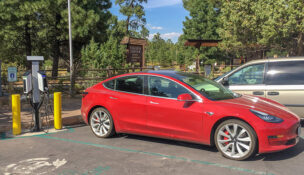Energy economics say wind, solar best path for Navajo Nation
Guest Opinion//December 9, 2013//[read_meter]
Energy economics say wind, solar best path for Navajo Nation
Guest Opinion//December 9, 2013//[read_meter]
Part of the debate about how to approach pollution cleanup at the big Navajo Generating Station coal-fired power plant near the Grand Canyon has always revolved around jobs and revenues...
No tags for this post.

















